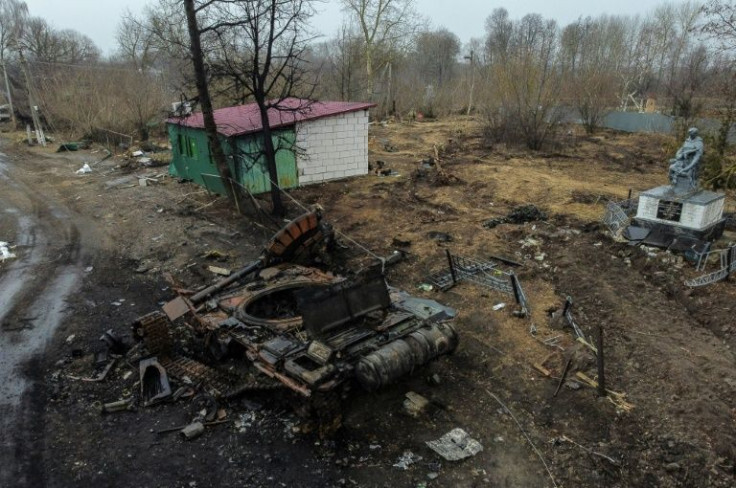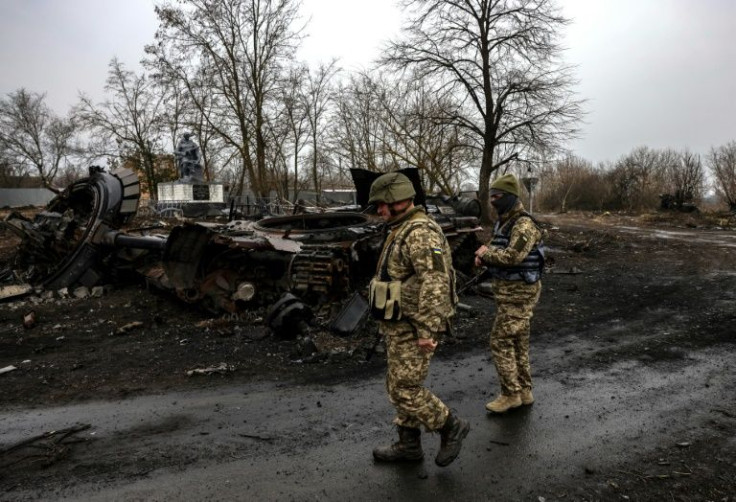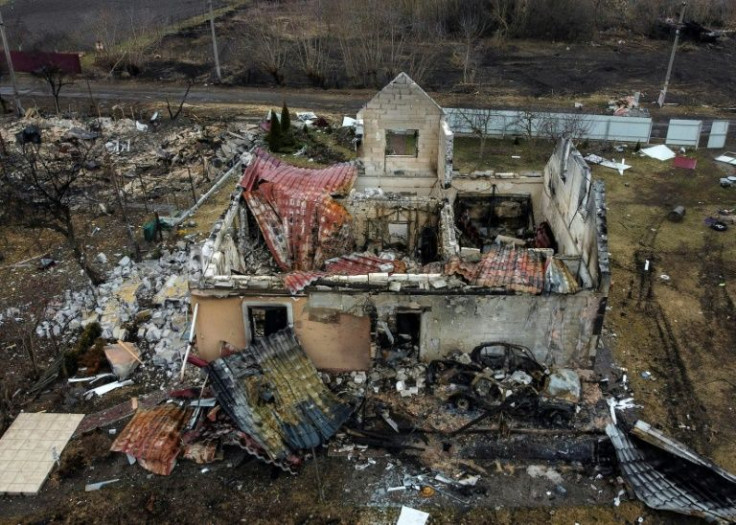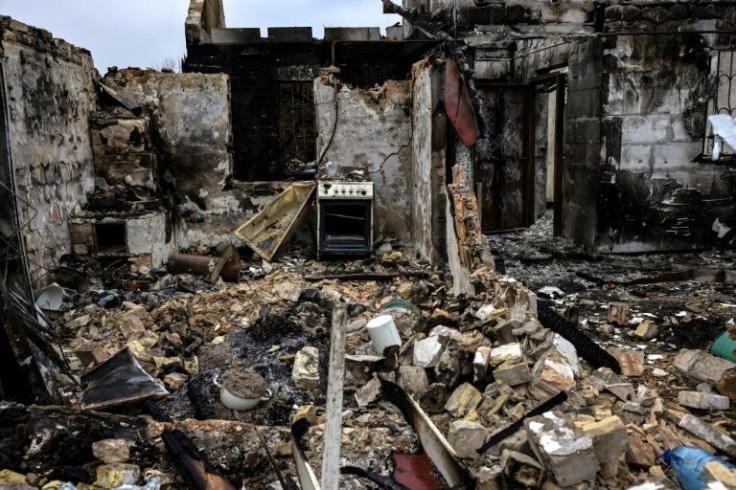Destroyed Tanks, Church On Frontline Of Battle For Kyiv
The battle for Kyiv is being fought in villages like Lukianivka, where burned-out Russian tanks and the charred, partially-buried corpse of a Russian soldier lie near a destroyed church.
Ukrainian soldiers boast of how their outnumbered army had taken on Moscow's military might and recaptured the tiny farming hamlet 70 kilometres (40 miles) east of the capital a week ago.
A trail of destruction bears testament to the ferocity of the fight -- destroyed houses and cars, and the reduction of the wooden 19th century Church of the Ascension to a pile of wreckage.

"War happened, what can I say. Shooting, there was so much fire, God forbid," said resident Andrii Semeniak, 37, as he cycled through the deserted town in the rain with his wife Nadia.
They are among the only residents left in the village, which is now pockmarked with bullet holes and shrapnel marks.
"Of course it was scary. Now it's better, there is no shelling anymore, and the Russians were pushed away," added Nadia Semeniak, 28.
The village deep in the fields is a world away from the gold church domes and now-closed designer shops of Kyiv, but places like this are where Ukraine says it is turning the tide against Russia.

Moscow's bid to encircle Kyiv has stalled, with the Ukrainian government claiming it has recaptured a series of towns and villages and Russia saying it will scale back attacks around the capital.
In Lukianivka, discarded green Russian military coats, rations and sweets lie on the damp ground, apparently as soldiers fled the village they had occupied for a month.

The two tanks had their turrets blown clean off by the force of the blasts that hit them, while the wreckage is scorched orange and black, AFP reporters who visited the village said.
One tank bears the 'O' marking of Russian forces that crossed from Belarus on February 24 as Russia invaded its ex-Soviet neighbour.
Right next to it, untouched by the fighting, is a statue of a rifle-bearing man commemorating the Soviet Union's dead from World War II.
The other tank lies abandoned in a muddy field. A few metres away, Ukrainian soldiers have thrown earth over the charred body of a Russian soldier but parts of the corpse remain visible.

"I talked to our tank man from our battalion who hit that tank" after the battle on March 24, says Ivan, a Ukrainian serviceman accompanying an army chaplain to visit the village.
"He saw the enemy tank in the viewfinder, he said he got scared but made the shot. When the smoke cleared he saw that the Russian tank was backing off," he said.
"He made another shot and yet another shot but the third one was unnecessary, because the turret was already blown off."
A gutted armoured personnel carrier lies further down the road, near a burned-out civilian van.
Ukrainian forces towed away five other vehicles -- three tanks and two armoured personnel carriers -- that Russian soldiers abandoned as they fled, the soldiers said.
But Lukianivka's liberation has come at a price.
Almost all civilians have fled. The tank battle destroyed at least half a dozen houses, with one smart, peach-coloured house left as just an empty shell.
"So this is 'demilitarisation and denazification'," said Vitali, another Ukrainian soldier, mocking Russian President Vladimir Putin's justifications for the invasion.
Its once-light-blue clapperboards, gold trimming and doors painted with pictures of saints lie beneath charred rubble.
The destruction of the church is inexplicable to Ukrainian army chaplain Nazarii Hahaliuk, given that Ukraine and Russia both share the Orthodox Christian faith.
He said he did "not believe as a person or a priest" in Russia's pledge to ease attacks on Kyiv.
"I feel pain, I feel tragedy, I feel spiritual decline like that of a person who has been killed," he said as he surveyed the ruins of the church.
"When enemies come and start destroying our villages, cities, buildings, and people, we have to protect them."
© Copyright AFP 2024. All rights reserved.





















